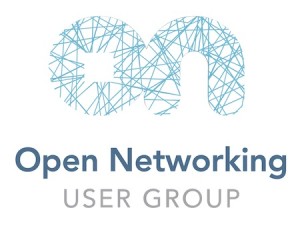Show 241 – Smart Labs on Public Cloud with Ravello – Sponsored
The Packet Pushers discuss Smart Labs on AWS & Google using Ravello's nested virtualization with Gil Hoffer, VP of R&D, & Navin Thadani, Sr. VP of Products.
The post Show 241 – Smart Labs on Public Cloud with Ravello – Sponsored appeared first on Packet Pushers.
Forget MPLS — Silver Peak Is Uniting the WAN With EdgeConnect
 MPLS? Psh. Old news, says Silver Peak.
MPLS? Psh. Old news, says Silver Peak.
Worth Reading: An Open Source Routing Lab
Worth Reading: An Open Source Routing Lab
I’ve been planning on setting this sort of thing up, as well, and blogging through it. Even though I was beat to the punch, it’s still on my todo list. And yes, I stupidly posted this with no link the first time. Blame it on my mind going in five different directions at once.
The post Worth Reading: An Open Source Routing Lab appeared first on 'net work.
A Look Back at ONUG NYC 2015

I had a great time at the Open Networking Users Group meeting in NYC last month. Shortly afterward, I took a moment to think back on what I’d seen there, and that post was published on Gestalit.com. I won’t reproduce it here, so please take a moment to read my post at the source (gestaltit.com) and let me know what you think (here or there; either is fine). Topics covered include:
- Containerized microservices
- Software Defined WAN
- Cross-functional teams
- Adoption rates of new technologies
ONUG covered some cool stuff; I hope you enjoy the post.
Disclosure
My post at GestaltIT is a sponsored post as part of the ONUG Spring 2015 Tech Talk Series, part of the larger Tech Talks series.
If you liked this post, please do click through to the source at A Look Back at ONUG NYC 2015 and give me a share/like. Thank you!
Explain-a-holic (Communicate Clearly)
But just a couple of days ago, I was talking to someone about managing expectations in the IT world. How do you convince someone else to buy into a project? How do you get them to back your idea, rather than inventing their own? While the question itself is interesting, I’m going to leave my thoughts on it to another post.
What I realized, halfway through answering the question, was that I was sucking up a lot of time talking about things that probably didn’t matter. I was spending time talking about the problems of getting people to own the problem, or make them believe they’d invented the solution, and specific projects I’d been involved in where we could never convince a wide group of people to buy into our ideas and solutions.
At some point, I’m certain I sounded like this snippet from a recent email —
Like if I asked, “what is 1+1?” he might say, “one takes 1, and adds 1 to it, and you get the next integer, which is really quite interesting, because you can do this over and over again, and never get the same answer, which is a bit like…”
There are, Continue reading
Advanced Carrier Supporting Carrier Design
LDP is the most commonly used label distribution protocol in today MPLS networks. Although it lacks of Traffic Engineering, Admission Control, Fast Reroute capabilities, it scales very well because of its Multi Point to Point Label Switched Path.BGP can also assign a label for the IP and also for the VPN prefixes and in this article I… Read More »
The post Advanced Carrier Supporting Carrier Design appeared first on Network Design and Architecture.